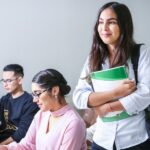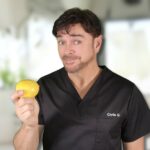Originally groomed for a career as a performing artist, Edna Golandsky has spent her entire life helping people to overcome technical limitations to fulfill their dreams at the piano, including intermediate-level pianists, gifted conservatory students, and touring concert artists.
Even as a child in Israel, there was already something special about Edna. At the age of eight, she started studying the piano. With her great talent, she progressed so rapidly that she found herself under the spotlights for recitals at ten years old and playing with orchestras two years later.
When she was 16 years old, Edna Golandsky traveled to the United States and was immediately accepted in the Preparatory Division of the prestigious Juilliard School. There, she studied with the most famous teachers in the world to perfect her craft. Eight years later, with her Bachelor’s and Master’s degrees, Edna was ready to launch her career as a performing artist.
However, hearing about Dorothy Taubman’s revolutionary approach to piano technique from her then-roommate and seeing how effective it could be to alleviate pain, remove limitations, and allow pianists to fulfill their potential, Edna Golandsky became fascinated and wanted to learn about the Taubman Approach. The more she understood, the more she appreciated its value, and the more she wanted to share it with other people so that they could be helped in the same way.
According to Edna, “Once I saw that solutions existed to solve all types of problems, to eliminate fatigue, tensions, and pain that seemed inevitable and eternal, and to allow unimaginable growth, I wanted everyone to know about it,” she shares.
Edna worked as Dorothy Taubman’s assistant and, later on, as her associate for many years. In 1974, Edna and Dorothy established the Taubman Institute, which presented and demonstrated the principles of the Approach in an annual symposium to an international audience for over twenty-six years.
In 2003, Edna launched her own institute, The Golandsky Institute, to expand the accessibility of this incredible approach as well as to create a training and certification program to produce Taubman teachers that would teach this work at the highest level. Recognized as the pre-eminent center for teaching the Taubman Approach, the revolutionary method for preventing pain and maximizing musical expression, the Golandsky Institute stands at the forefront of positive change.
Through her Institute, Edna presents affordable, weekend online symposiums, as well as a free, online library packed with world-class content of transformative tools for every musician.
Over the last four decades, Edna’s impact has grown immeasurably. Her efforts in teaching the Taubman Approach to playing, in resolving repetitive stress injuries, and carpal tunnel syndrome at the computer and iPhone keyboards, and her commitment to making music education inclusive of all, have paid off. Among the countless professionals inspired and taught by Edna Golandsky are Josu De Solaun, Gabriela Montero, Ilya Itin, and Danilo Pérez.
Despite the success of her numerous students, Edna remains more driven than ever, intent on expanding the Golandsky Institute’s reach internationally and helping individuals everywhere to deepen their knowledge and abilities with this approach.
Throughout her decades-long journey, the piano pedagogue revealed to us what has inspired and continues to inspire her with this new approach: “I wanted to show that there is hope to people who felt that the door for further advancement was closed to them. That motivation has continued up to the present day, and I see a positive transformation occurring in so many people far beyond just the keyboard, I am motivated more than ever to spread this knowledge.”
Learn more about the brilliant Edna Golandsky, the world’s leading piano pedagogue and the premier Taubman Approach instructor, on her official website.
















